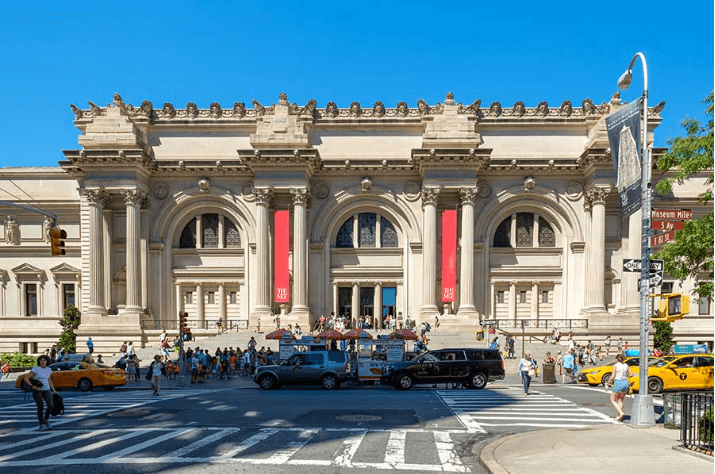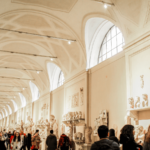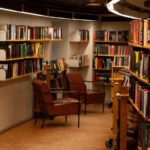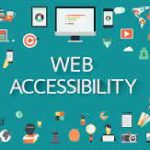Museums are important cultural and educational institutions that preserve and showcase our history, art, and heritage. However, ensuring that these spaces are accessible to all individuals, regardless of their abilities presents a significant challenge. Fortunately, technology has emerged as a powerful tool in addressing these accessibility gaps and promoting inclusivity within museum environments. By harnessing the potential of technological advancements, museums can provide equal access and create engaging experiences for all visitors.
This article explores the pivotal role of technology in ensuring museum accessibility. It highlights various technological solutions and approaches that enable individuals with disabilities to access and engage with museum exhibits.
Digitization is the future for museum accessibility

Technology provides assistive devices that cater to individuals with sensory impairments, such as hearing aids, screen readers, and tactile models. AR and VR technologies offer immersive and interactive experiences, allowing visitors to explore virtual exhibits or historical locations. Multilingual interpretation ensures that individuals from diverse linguistic backgrounds can access museum content in their preferred language.
Digital accessibility ensures that museum websites and online resources are accessible to individuals with disabilities. Also ensuring inclusive interactive displays cater to diverse abilities and learning styles. Wayfinding and navigation systems help visitors navigate through museum space and social media. Online engagement extend the reach of museums, allowing remote access to exhibitions and educational resources.
By embracing these technological advancements, museums can break down digital limitations and cultivate a more inclusive museum experience.
Assistive Devices
One crucial aspect of technology in museum accessibility is the use of assistive devices. These devices cater to individuals with sensory impairments, providing them with tools to effectively access museum exhibits. Assistive listening systems, such as hearing aids and cochlear implants, amplify audio content. Thus ensuring individuals with hearing impairments can fully experience spoken narratives, guided tours, or interactive presentations.
Screen readers and captioning systems enable visually impaired visitors to access textual information by converting it into speech or braille. Tactile models and touchscreens offer haptic feedback and accessible interactive elements, enhancing the experience for visually impaired visitors. Integrating assistive devices into museum settings helps to create inclusive environments that cater to a broad range of sensory needs.
Augmented Reality (AR) and Virtual Reality (VR)
These technologies offer immersive and interactive experiences that significantly affect museum accessibility. AR overlays digital content onto the real-world environment, enabling visitors to engage with virtual elements within a physical museum setting. AR applications on mobile devices or headsets enable visitors to access extra information, interactives, and animated visualizations, enhancing physical exhibits. This technology is valuable for individuals with mobility limitations or geographic constraints. Thus providing virtual experiences of museum exhibits and cultural artifacts.
Virtual Reality (VR) transports users to entirely virtual environments, offering unique opportunities for museum accessibility. With VR headsets, visitors can navigate virtual spaces, interact with three-dimensional models of artifacts, and explore historically significant locations. Immersive technology enables access for those unable to physically visit museums due to distance, health conditions, or mobility limitations. VR experiences can be inclusive, educational, and tailored to diverse learning styles and physical abilities.
Embracing AR and VR technologies enables museums to surpass physical limitations, broaden their audience, and engage visitors inclusively. These immersive experiences bridge the gap between virtual and physical realities. Thus enable individuals to access and explore museum exhibits regardless of their location or constraints.
Multilingual Interpretation Enhances Museum Accessibility
In an increasingly interconnected world, multilingual interpretation is critical in ensuring museum accessibility and fostering inclusivity. Museums attract visitors from diverse cultural and linguistic backgrounds. They provide translations or information in multiple languages necessary to create an inclusive environment.
Multilingual interpretation can be facilitated through various means, such as audio guides, interactive touchscreens, mobile applications, and multilingual signage. Audio guides offer narrations in different languages, enabling visitors to access exhibit information in their preferred language. Interactive touchscreens equipped with multilingual interfaces allow users to explore exhibits. And also access additional information, and engage with interactive features in their own language.
Mobile applications provide a personalized and immersive experience, directly delivering exhibit information, translations, and interactive content to visitors’ smartphones. Multilingual signage ensures that visitors can understand directions, exhibit labels, and other important information, regardless of their language proficiency.
Digital Accessibility
In today’s digital age, digital accessibility has become vital to museum accessibility. Museums increasingly rely on digital platforms to disseminate information, engage with visitors, and provide online resources. Digital spaces must be accessible to individuals with disabilities to promote inclusivity and equal access to cultural and educational resources.
Captioning, transcripts, and audio descriptions ensure accessibility of multimedia content for those with hearing or visual impairments. Offering alternative formats for downloadable resources, like PDF documents, ensures effective access for individuals using assistive technologies. Museums should prioritize digital accessibility, following established guidelines and standards, to ensure equal access for individuals with disabilities.
Inclusive Interactive Displays
Inclusive interactive displays are designed to accommodate diverse abilities and learning styles, ensuring that visitors of all backgrounds and physical abilities can engage with exhibits. These displays offer multiple modes of interaction, such as touchscreens, physical buttons, gesture-based controls, or voice commands. By providing various interaction options, museums cater to different abilities and ensure that individuals can engage with exhibits in a way that suits their preferences and needs.
Adjustable controls, clear user interfaces, and sensory engagement elements enhance the inclusive experience. For example, displays can incorporate adjustable font sizes, color schemes, or audio settings to cater to individuals with visual impairments or cognitive disabilities. Sensory engagement elements, such as tactile surfaces, audio feedback, or vibration, provide a more immersive experience for visitors with sensory impairments.
Wayfinding and Navigation
Wayfinding and navigation systems within museums play a crucial role in ensuring accessibility. Clear signage, accessible maps, interactive kiosks, beacon technology, and augmented reality applications aid visitors in navigating through the museum’s physical space.
Clear signage with readable fonts, appropriate color contrast, and universal symbols enables individuals with visual impairments or cognitive disabilities to navigate museum spaces independently. Accessible maps and interactive kiosks provide intuitive and user-friendly interfaces for visitors to locate exhibits, amenities, and facilities within the museum.
Beacon technology, utilizing Bluetooth signals, can provide real-time information, interactive maps, and guidance to visitors’ smartphones or other devices. This technology enables individuals to receive personalized navigation assistance, locate specific exhibits, or access additional information based on their preferences and needs.
Moreover, augmented reality applications can enhance wayfinding and navigation within museums. By overlaying digital information onto the real-world environment, AR applications can provide interactive maps, exhibit information, and directions, allowing visitors to navigate the museum space with ease and confidence.
Social Media and Online Engagement
Social media and online engagement have become powerful tools for ensuring museum accessibility and expanding the reach of cultural institutions. Museums can leverage these platforms to engage with a broader audience and remotely provide access to their collections and educational resources.
Social media platforms like Facebook, Twitter, Instagram, and YouTube allow museums to share images, videos, stories, and behind-the-scenes content, fostering engagement and creating virtual communities around their exhibits. Virtual exhibitions and live-streaming events enable individuals to experience and participate in museum activities from anywhere worldwide, breaking down geographical barriers and providing opportunities for remote access.
Webinars, online workshops, and educational resources delivered through digital platforms ensure that individuals can engage with museum content and learn from experts, regardless of location or physical ability. Online accessibility features, such as captions, transcripts, or audio descriptions, enhance the inclusivity of these online resources.
Additionally, museums can utilize interactive features on their websites or dedicated applications to facilitate visitor engagement and communication. Online platforms can provide forums, chatbots, or virtual assistants that respond to inquiries, provide additional information, or support visitors with disabilities in accessing museum content and services.
codemantra ensures museum accessibility
Museums & art galleries are the last bastion institutions protecting & preserving our rich history & culture. In a world with the rapid adoption of digital consumption, it is necessary to make these institutions have the ability to transform their presence from a physical world to a digital world. codemantra is helping museums & art galleries transform their assets for the digital world, automate their document life cycle, improve accessibility compliance, and improve their revenue opportunities.
codemantra, powered with AI capabilities intelligently processes documents to capture relevant data by converting unstructured and semi-structured documents into structured documents and enabling end-to-end automation.
As codemantra’s Chief Operating Officer, Sanjeev Kalyanaraman explains, “The world has experienced rapid growth in digital consumption in recent times. So, institutions must translate their physical assets into the digital space. We are helping museums and galleries make their documents available to anyone, anytime to support their inclusivity initiatives and meet with international accessibility regulations.” This sentiment is written into codemantra’s mission, with its commitment to “usher in digital and cultural transformation” using its own proprietary IDP platform.
Conclusion
Technology plays a pivotal role in ensuring museum accessibility by removing physical and communication barriers, enhancing visitor experiences, and fostering inclusivity. The various technological advancements discussed in this article provide museums with powerful tools to create inclusive environments that cater to diverse abilities and backgrounds.
By embracing these technological advancements and prioritizing accessibility, museums can create transformative experiences, foster inclusivity, and contribute to a more equitable cultural and educational landscape. Museums must continue exploring innovative solutions, adhering to accessibility guidelines, and seeking input from individuals with disabilities to ensure that their collections, exhibits, and educational offerings are accessible and meaningful to all.









